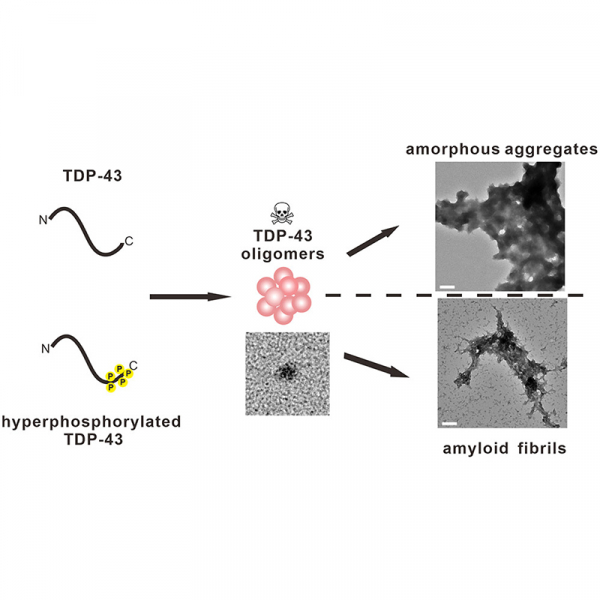TDP-43 proteinopathies cover a range of neurodegenerative diseases, including frontotemporal lobar degeneration (FTLD) and amyotrophic lateral sclerosis (ALS). Hyperphosphorylated TDP-43 was found within the inclusion bodies in disease lesions; however, the role of hyperphosphorylation and the toxic species are still ambiguous. To characterize the hyperphosphorylation effect of TDP-43, here, we employed five serine mutations implicated in the diseases at serine locations 379, 403, 404, 409, and 410 in the C-terminus to aspartate (S5D) and to alanine (S5A). We systematically characterized the conformation, liquid–liquid phase separation, oligomerization, and fibrillization of TDP-43 variants. Results revealed that the recombinant TDP-43 variants readily formed structurally similar spherical oligomers, as evidenced by circular dichroism spectroscopy, fluorescence spectroscopy, the TDP-43 oligomer-specific antibody assay, dynamic light scattering, and transmission electron microscopy. After incubation, only the phosphor-mimic S5D TDP-43 formed thioflavin-positive amyloid fibrils, whereas wild-type and S5A TDP-43 formed amorphous aggregates. We also examined membrane disruption, the cytotoxicity of human neuroblastoma, and the synaptic loss of primary neurons induced by oligomers and large aggregates of TDP-43. The results showed that all oligomeric TDP-43 variants were toxic regardless of hyperphosphorylation, but the fibrils and amorphous aggregates were not. Overall, our results demonstrated the hyperphosphorylation effect on fibril formation and the toxicity attributed from TDP-43 oligomers. This study facilitates the understanding and therapeutic development for TDP-43 proteinopathies.
